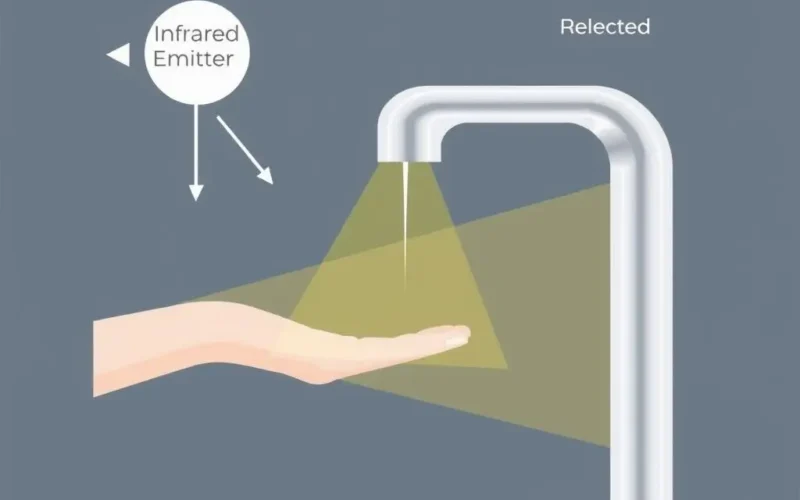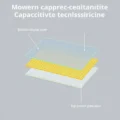Imagine this: You’re in the bathroom or kitchen, hands messy, and you just need water. Instead of fumbling for a handle, you simply wave your hand under the faucet, and *whoosh* – water flows. It feels a bit like magic, doesn’t it? Like the faucet has eyes and is waiting for your command. But how does it really work? These modern conveniences aren’t equipped with tiny cameras watching your every move. The truth behind their seemingly intuitive operation is rooted in clever, invisible technology.
Think about it: you don’t press a button, turn a knob, or pull a lever. Your simple proximity or a hand gesture is enough. The secret isn’t visual recognition in the way a security camera sees you; it’s about light you can’t even perceive.
Table of Contents
The Hidden Science: Infrared Takes the Stage
So, if they don’t have cameras, what gives them this seemingly clairvoyant ability? The answer lies in a fascinating application of infrared (IR) technology. It’s the same kind of light used in your TV remote, just employed differently. Touchless faucets use tiny components that emit pulses or beams of this invisible light and others that are ready to receive it back.
Here’s a quick visual rundown of the core idea, straight from our TechOTV YouTube Shorts:
As the video hints, it’s not magic, but rather an elegant dance between light and sensors.
Diving Deeper: How the Infrared Sensor System Works
Let’s break down the components and the process step-by-step to understand the mechanics behind the curtain.
The heart of a touchless faucet’s sensing ability lies in its integrated sensor module. This module typically contains at least two key parts:
- An Infrared Emitter: This is like a tiny LED that doesn’t produce visible light, but instead emits infrared light. It constantly sends out a beam or cone of this invisible light, often towards the area just below the spout where you’d place your hands.
- An Infrared Receiver (Sensor): This component is specifically designed to detect infrared light. It’s positioned to ‘look’ for the light emitted by the emitter.
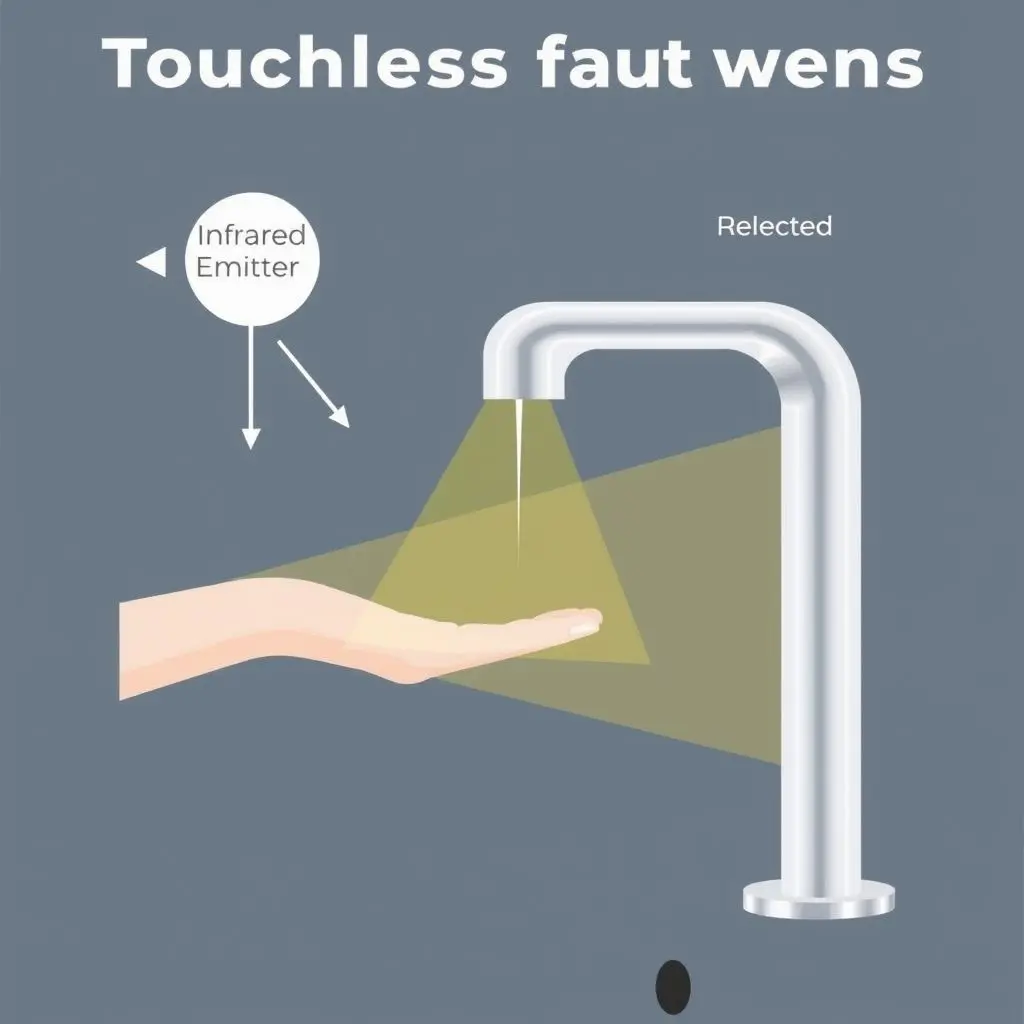
The Detection Process in Action:
1. Constant Emission: The IR emitter is always active when the faucet is powered, sending out a steady stream of infrared light pulses.
2. Waiting to Receive: The IR receiver is simultaneously waiting to detect any infrared light.
3. Interruption and Reflection: This is where your hand comes in. When you place your hands under the faucet spout, you interrupt the path of the emitted infrared light. Unlike visible light which might be absorbed or pass through things differently, infrared light, particularly the wavelengths used here, is good at reflecting off surfaces – including your skin, dishes, or even a sponge.
4. Light Bounces Back: The infrared light hits your hands (or other object) and a significant portion of it is reflected back towards the faucet.
5. Sensor Activation: The IR receiver detects this reflected infrared light. Modern sensors are quite sophisticated; they often look for the specific pattern or frequency of pulses sent out by the emitter to distinguish them from random ambient infrared (like sunlight or warm objects), preventing false activations.
6. Signal to the Valve: Once the sensor detects sufficient reflected infrared light – indicating something is within the detection zone – it sends an electrical signal to a small electronic control unit.
7. Valve Opens: The control unit then signals a solenoid valve. This valve, which controls the flow of water, opens up, allowing water to come out of the spout.
8. Valve Closes: When you remove your hands, the reflected infrared light is no longer detected by the receiver. The sensor registers the absence of the object, tells the control unit, which in turn signals the solenoid valve to close, stopping the water flow.
This entire process happens in milliseconds, making the faucet seem instantly responsive to your presence.
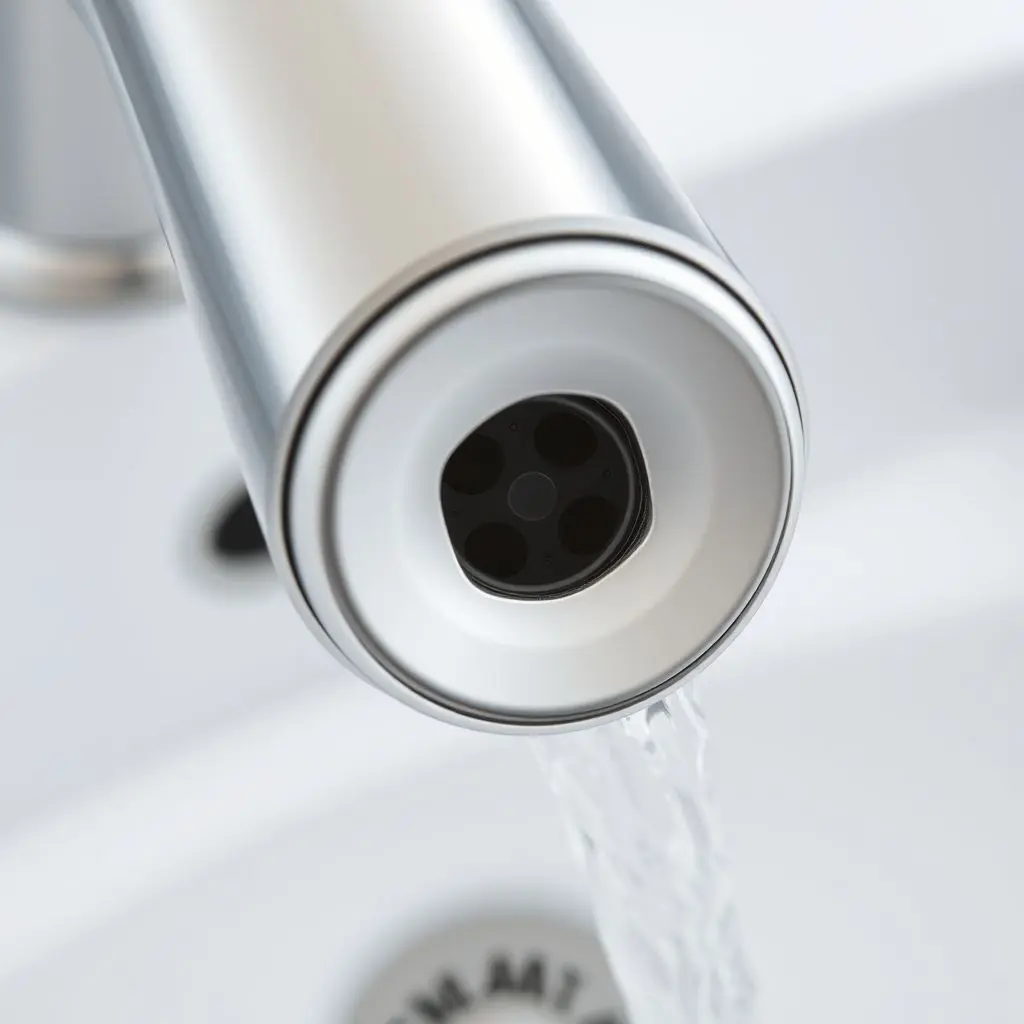
Why Infrared? The Advantages
Infrared light is particularly well-suited for this application for several reasons:
- Invisible to the Human Eye: It operates discreetly without emitting distracting visible light.
- Unaffected by Visible Light: While strong direct sunlight contains IR, the specific wavelengths and pulsing patterns used by the faucet’s emitter and sensor design make it largely immune to interference from normal room lighting or even moderately bright environments.
- Reliable Reflection: Most common surfaces, including skin and porcelain, reflect infrared light effectively.
- Energy Efficiency: The components are low-power, making them suitable for battery-operated faucets found in many homes, as well as mains-powered commercial units.
Beyond the Tap: Other Infrared Uses
The same basic principle of using infrared light for detection and measurement is found in numerous other technologies, like:
- Automatic soap dispensers
- Hand dryers
- Occupancy sensors (to turn lights on/off)
- Some types of security sensors
- Even in some paper towel dispensers
It’s a versatile technology that leverages an invisible part of the light spectrum for practical purposes.
When the “Magic” Doesn’t Work: Troubleshooting
While generally reliable, touchless faucets can sometimes seem unresponsive. If yours isn’t working, here are common culprits related to the infrared system:
- Obstruction or Dirt: The most frequent issue. If the small sensor window (often a dark or clear lens near the spout base) is covered in soap scum, mineral deposits, or dirt, the emitted IR can’t get out, or the reflected IR can’t get back in. Cleaning this window gently is usually the first fix.
- Battery Issues: Many residential touchless faucets are battery-powered. Weak or dead batteries mean the emitter and sensor aren’t getting enough power to function correctly. Check and replace the batteries.
- Ambient Light Interference: While designed to minimize this, very strong, direct infrared sources (like pointing an active TV remote directly at it, or sometimes very bright, low-angle sunlight) could potentially cause issues, though this is rare with modern designs.
- Object Placement: If you’re holding a very dark object that absorbs IR rather than reflecting it well, the sensor might not activate. Or if the object is too far away or too close.
- Sensor Malfunction: Like any electronic component, the emitter or sensor can eventually fail, requiring repair or replacement.
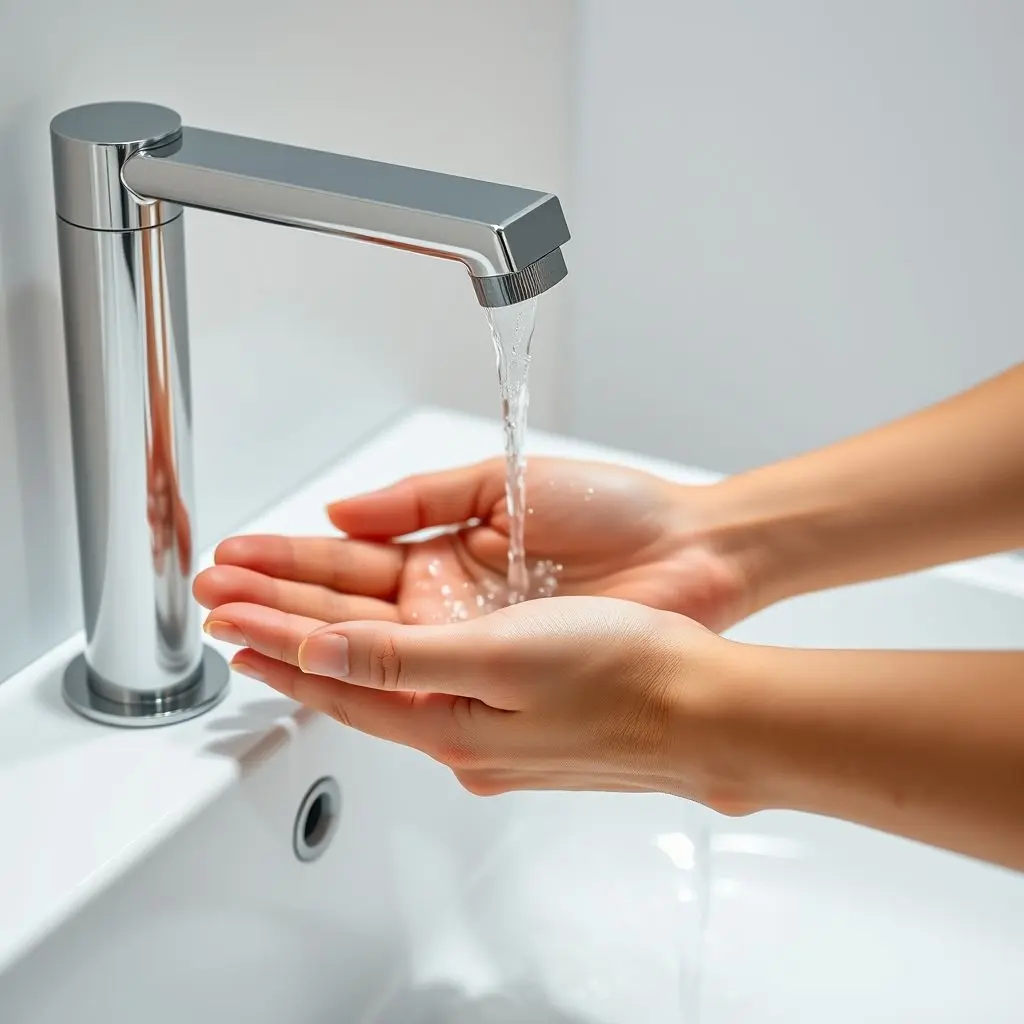
The Practical Benefits: More Than Just a Gimmick
Beyond the cool factor, touchless faucets offer tangible advantages:
- Improved Hygiene: This is the big one. Reducing contact points in kitchens and bathrooms limits the spread of germs and bacteria, especially crucial when preparing food or after using the restroom. You avoid touching potentially contaminated handles.
- Water Conservation: Because the water flow stops almost immediately when you remove your hands, there’s less wasted water compared to manually turning handles on and off, especially when washing hands or doing small tasks.
- Convenience: Operating the faucet with full or dirty hands is effortless.
These benefits, driven by the simple yet effective infrared sensing technology, explain their growing popularity in both public and private spaces.
Frequently Asked Questions About Touchless Faucets
Q: Are touchless faucets hardwired or battery-powered?
A: They can be either. Many commercial and some high-end residential models are hardwired into the electrical system. However, many residential touchless faucets are battery-powered (often using AA or D batteries) for easier installation without needing new electrical wiring near the sink.
Q: How long do the batteries last in a touchless faucet?
A: Battery life varies greatly depending on usage frequency, battery quality, and the specific faucet model. It can range from six months to two years or more. Most models will give a warning (like a flashing light) when batteries are low.
Q: Can I adjust the sensitivity of the sensor?
A: Some higher-end models offer adjustable sensitivity, allowing you to change the detection range. However, many standard models have a fixed range that is calibrated during manufacturing.
Q: Do touchless faucets work in the dark?
A: Yes! Since they use infrared light (which is invisible) rather than relying on visible light or traditional cameras, they work perfectly fine in complete darkness. The ambient visible light level does not affect their core function, although extremely strong IR sources (like direct sunlight) could potentially interfere as mentioned earlier.
Q: What if something is left in front of the sensor?
A: If an object (like a bottle, sponge, or cloth) is left continuously within the sensor’s detection zone, the faucet’s control logic might interpret this as a constant presence. To prevent continuous water flow, most touchless faucets have a built-in timeout feature that will automatically shut off the water after a certain period (e.g., 30 seconds or one minute), even if the sensor is still activated. Moving the object or briefly waving your hand again will reset the timer.
Q: Are touchless faucets worth the extra cost?
A: This depends on your priorities. If enhanced hygiene, water conservation, and convenience are important to you, the benefits may outweigh the typically higher upfront cost compared to standard manual faucets. For commercial settings like restaurants or public restrooms, the hygiene benefits are almost essential.
An Invisible Interaction
So, the next time you experience the seemingly effortless flow of water from a touchless faucet, remember there’s no camera lens secretly watching. It’s a precisely engineered interaction between an invisible beam of infrared light, the reflective surface of your hand, and a sensitive electronic eye that catches the returning signal. It’s a simple, elegant, and highly effective solution that leverages the properties of light to make our lives a little cleaner and more convenient.
Fascinating, isn’t it?
